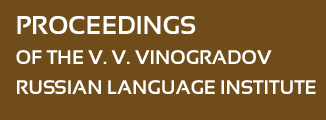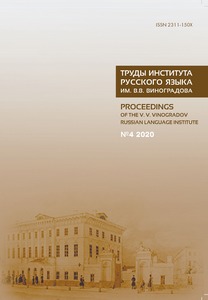ON THE PRONUNCIATION NORMS OF THE ORTHODOX SERMON
Abstract:
The article describes the specifics of the segmental level of modern Orthodox preaching. It demonstrated that modern sermons contain some pronunciation elements of the Church Slavonic language, including the preservation of qualitative and quantitative characteristics of vowels of complete formation under stress and in an unstressed position; pronunciation of stressed non-labialized [e] after soft consonants, sibilant and [c] before hard consonants; letter-by-letter pronouncing of inflections in grammatical forms; a special pronunciation of the word “chto”. The paper shows that Church Slavonic norms are presented, as a rule, inconsistently, are often reproduced in isolated cases, and usually apply to specific word forms. The article argues that Church Slavonic orthoepic variants are found not only when reciting texts of Holy Scripture and prayer in Church Slavonic, but also when reproducing fragments of sacred texts in Synodal translation, and also freely penetrate into the actual author’s speech of the pastor. At the same time, the frequency of Church Slavonic pronouncing elements may be different for different preachers. The conclusion is made that the pronunciation norms of modern Orthodox preaching are formed as a result of the interaction of the orthoepic systems of two lan guages — modern Russian and Church Slavonic.


